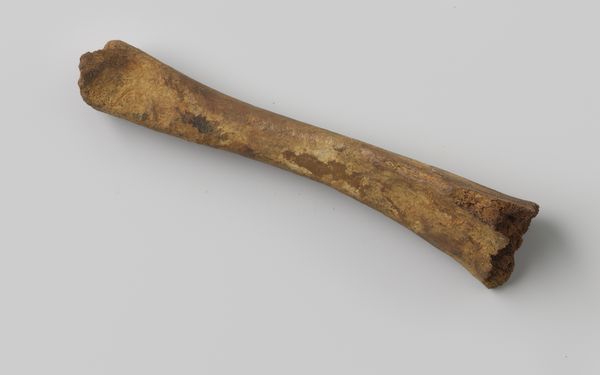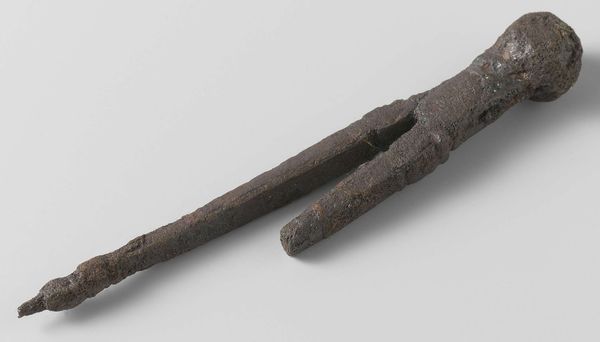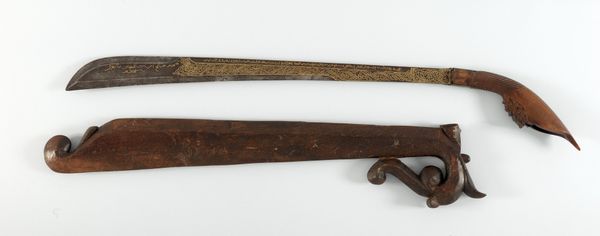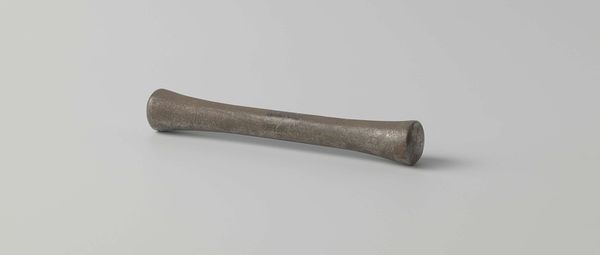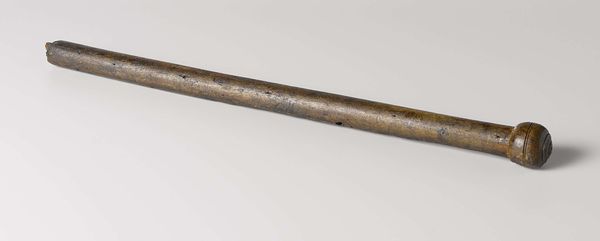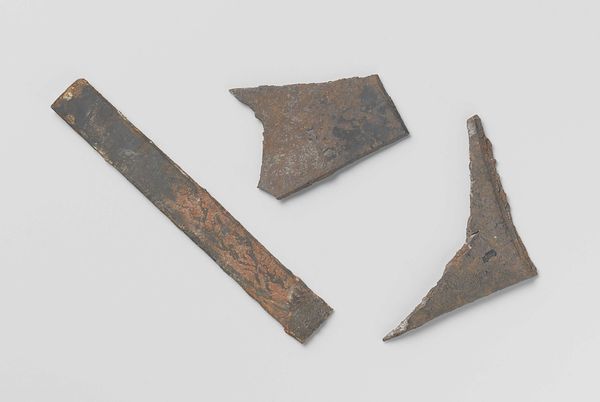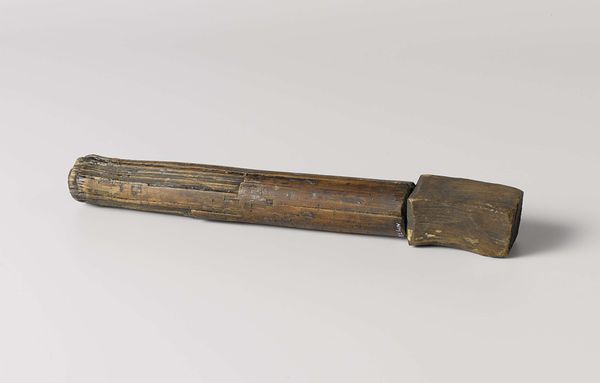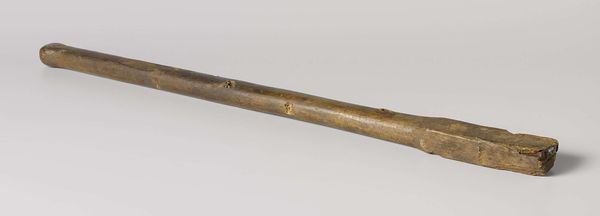
ceramic, sculpture, terracotta
#
sculpture
#
ceramic
#
sculpture
#
terracotta
#
indigenous-americas
Dimensions: 57.2 × 9.2 × 2.5 cm (22 1/2 × 3 5/8 × 1 in.)
Copyright: Public Domain
Curator: These compelling objects, "Ceremonial Knife," come from the Colima culture around the year 200, part of the artistic legacy of the ancient Indigenous Americas. They are currently housed at The Art Institute of Chicago. Editor: My first impression is one of potent symbolism. The sharp points are obviously designed to cut or pierce, but the muted earthen colors, and subtle sheen of the surface, convey the passage of time. There is an unsettling harmony of form and purpose, a convergence of violence and tranquility. Curator: Notice the subtle differences between these pieces: a slight divergence in length, hue, and the sculptural character of the handles. These contribute to the rhythm of the piece. Further study might allow us to determine if these objects were originally paired, and whether such visual difference would alter the significance. Editor: And it’s also worth exploring their use, especially how meaning is constructed and maintained by specific groups through violence and display. I wonder who wielded such a ritual object? What specific ideologies or power structures are implicit in these weapons as display? Curator: Yes, precisely, by exploring this context, you can truly see how this pairing comes into form, a kind of semiotic reading on power, and a visualization of indigenous identity. These abstract components are more evocative and powerful than mere physical artifacts. Editor: I would like to add to that and pose that what's seemingly revealed by the object’s form has been created and shaped over time. We might even use post-structuralist concepts to read that the function of these blades, their visual character and ritual practice, may shift, conflict, and evolve through interpretation, social usage, or just accidents. Curator: The object exists, yes, and it stands for a ritual but can change, depending on the interpretation. In short, it stands for one idea or interpretation over all possible realities of violence, the state and ideology that support this action. Editor: Indeed. Approaching these Colima blades, we recognize they're far more than a snapshot of the past, more than archaeological remnants; rather, these potent ceramic objects carry layers of meaning we're still in the process of discerning. Curator: I find the material properties themselves revealing. Notice the texture and its subtle visual interplay? Perhaps we need to return again just to study these lines and curves...
Comments
No comments
Be the first to comment and join the conversation on the ultimate creative platform.

